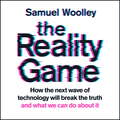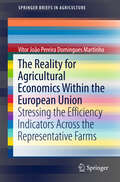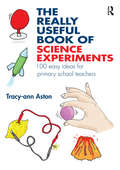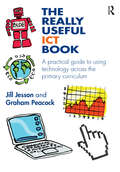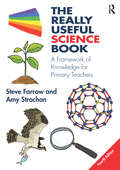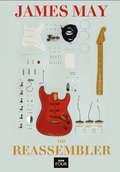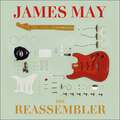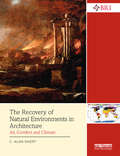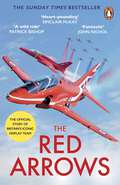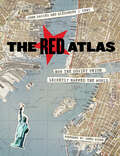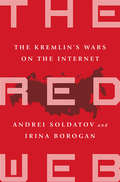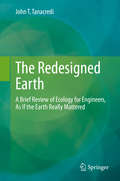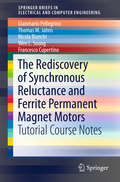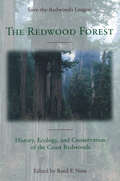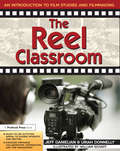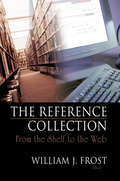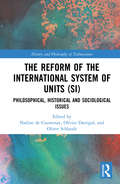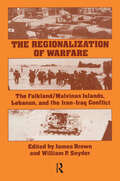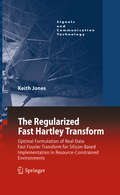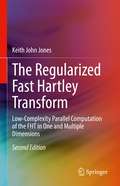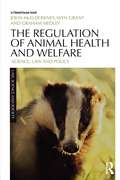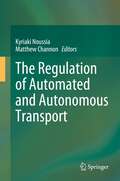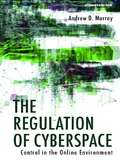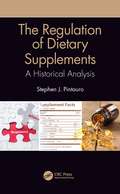- Table View
- List View
The Reality Game: A gripping investigation into deepfake videos, the next wave of fake news and what it means for democracy
by Samuel WoolleyThe problem of online disinformation is only getting worse. Social media may well play a role in the the US 2020 presidential election and other major political events. But that doesn't even begin to describe what future propaganda will look like. As Samuel Woolley shows, we will soon be navigating new technologies such as human-like automated voice systems, machine learning, 'deep-fake' AI-edited videos and images, interactive memes, virtual reality and augmented reality. In stories both deeply researched and compellingly written, Woolley describes this future, and explains how the technology can be manipulated, who might control it and its impact on political strategy. (p) 2020 Octopus Publishing GroupFinally, Woolley proposes strategic responses to this threat with the ultimate goal of empowering activists and pushing technology builders to design for democracy. We may not be able to alter how the internet was used to challenge democracy in years past but we can follow the signals to prevent manipulation in the future - and to use these powerful new tools not to control people but to empower them.
The Reality for Agricultural Economics Within the European Union: Stressing the Efficiency Indicators Across the Representative Farms (SpringerBriefs in Agriculture)
by Vítor João Pereira Domingues MartinhoThe objective of this study is to analyze several dimensions of the agricultural economics reality for the representative farms of the European Union countries by using microeconomic data available in the Farm Accountancy Data Network from 1989-2009. To support this research, several ratios and efficiency indicators were calculated across several variables relative, namely, to the agricultural output and the utilized agricultural area. These ratios and indicators were analyzed further through econometric models associated with the convergence approaches, presenting with more detail the Portuguese case. Furthermore, it is important to design a set of strategies that are more suited to the European Union realities.
The Reality of the Artificial
by Massimo NegrottiThe human ambition to reproduce and improve natural objects and processes has a long history, and ranges from dreams to actual design, from Icarus's wings to modern robotics and bioengineering. This imperative seems to be linked not only to practical utility but also to our deepest psychology. Nevertheless, reproducing something natural is not an easy enterprise, and the actual replication of a natural object or process by means of some technology is impossible. In this book the author uses the term naturoid to designate any real artifact arising from our attempts to reproduce natural instances. He concentrates on activities that involve the reproduction of something existing in nature, and whose reproduction, through construction strategies which differ from natural ones, we consider to be useful, appealing or interesting. The development of naturoids may be viewed as a distinct class of technological activity, and the concept should be useful for methodological research into establishing the common rules, potentialities and constraints that characterize the human effort to reproduce natural objects. The author shows that a naturoid is always the result of a reduction of the complexity of natural objects, due to an unavoidable multiple selection strategy. Nevertheless, the reproduction process implies that naturoids take on their own new complexity, resulting in a transfiguration of the natural exemplars and their performances, and leading to a true innovation explosion. While the core performances of contemporary naturoids improve, paradoxically the more a naturoid develops the further it moves away from its natural counterpart. Therefore, naturoids will more and more affect our relationships with advanced technologies and with nature, but in ways quite beyond our predictive capabilities. The book will be of interest to design scholars and researchers of technology, cultural studies, anthropology and the sociology of science and technology.
The Really Useful Book of Science Experiments: 100 easy ideas for primary school teachers (The Really Useful)
by Tracy-ann AstonThe Really Useful Book of Science Experiments contains 100 simple-to-do science experiments that can be confidently carried out by any teacher in a primary school classroom with minimal (or no!) specialist equipment needed. The experiments in this book are broken down into easily manageable sections including: It’s alive: experiments that explore our living world, including the human body, plants, ecology and disease A material world: experiments that explore the materials that make up our world and their properties, including metals, acids and alkalis, water and elements Let’s get physical: experiments that explore physics concepts and their applications in our world, including electricity, space, engineering and construction Something a bit different: experiments that explore interesting and unusual science areas, including forensic science, marine biology and volcanology. Each experiment is accompanied by a ‘subject knowledge guide’, filling you in on the key science concepts behind the experiment. There are also suggestions for how to adapt each experiment to increase or decrease the challenge. The text does not assume a scientific background, making it incredibly accessible, and links to the new National Curriculum programme of study allow easy connections to be made to relevant learning goals. This book is an essential text for any primary school teacher, training teacher or classroom assistant looking to bring the exciting world of science alive in the classroom.
The Really Useful ICT Book: A practical guide to using technology across the primary curriculum (The Really Useful)
by Graham Peacock Jill JessonThe Really Useful ICT Book is a practical and easy-to-use guide to give you all the confidence you need to use ICT really effectively inside and outside the primary classroom. It makes clear how ICT can be taught as a standalone subject, and how it can be used easily and imaginatively to enhance teaching other subjects. Jam-packed with ideas and templates to save you time, this friendly handbook offers an introduction to: using ICT inside the classroom – including interactive whiteboards, computer suites, VLEs and e-safety using ICT outside the classroom – including word processors, laptops, data loggers and digital cameras when and how to use a wide range of software and hardware – from spreadsheet packages through to digital photography, e-portfolios and software simulation using ICT in all subject areas practical suggestions for using ICT in cross-curricular topics using ICT to develop teacher and pupil creativity using ICT for assessment and in your professional role. With an emphasis on developing children’s creativity and on progression from Key Stage 1 to Key Stage 2, The Really Useful ICT Book is a comprehensive compendium of advice and inspiration for all training, newly qualified and experienced teachers, as well as those in support roles in primary schools.
The Really Useful Science Book: A Framework of Knowledge for Primary Teachers (The Really Useful)
by Steve Farrow Amy StrachanOffering support to both trainee and practising teachers, the fourth edition of The Really Useful Science Book is the perfect tool for those who wish to extend their subject knowledge, enhance their teaching and create lessons which link directly to the National Curriculum. The easy-to-follow framework provides comprehensive science knowledge for Key Stages 1 and 2 and is fully updated with new material to inspire stimulating and engaging science lessons. The book is divided into three sections: Biology, Chemistry and Physics. Each section integrates key scientific ideas and facts with innovative teaching methods and activity suggestions, and user-friendly language and illustrations help to explain key scientific concepts. With links to global learning, discussion of common misconceptions, and ideas for cross-curricular opportunities, each chapter connects knowledge to practice and informs creative and inspiring teaching. The Really Useful Science Book is an invaluable reference resource for all classroom teachers who wish to develop the confidence to teach enquiry-based practical science with relevance to pupils and their global community.
The Reassembler
by James May'A typically Mayesque celebration of classic engineering ... May is extraordinarily good at explaining what a carburettor is or outlining how a governor works... It's charming, transfixing and surprisingly intimate...It might be the best thing he's ever done.' - Guardian [review of BBC4 TV series]'Reassembly is merely a form of therapy; something that stimulates a part of my brain that is left wanting in my daily life. When I rebuild a bicycle, I re-order my head. So might you...I'm delighted that you will be holding in your hands a book about putting things back together. It's a subject that fascinates me but which I assumed was a lonely passion that I would take to the grave, unconsummated by the normal channels of human interaction.Welcome! You and I, we are not alone, and our screwdrivers are our flashing Excaliburs as we sally forth to make small parts of the fragmented world whole again.'As in his hit BBC4 TV series, as well as learning the history of the objects, we get a history of the component parts. As James rebuilds an engine, he explains the cylinders, what they are, how they came about and what they do.
The Reassembler
by James MayFrom the humble garden lawnmower to the ear-splitting electric guitar, James May returns with a typically wacky account of what makes these great machines work, one piece at a time.Reassembly is merely a form of therapy; something that stimulates a part of my brain that is left wanting in my daily life. When I rebuild a bicycle, I re-order my head. So might you...I'm delighted that you will be listening to an audiobook about putting things back together. It's a subject that fascinates me but which I assumed was a lonely passion that I would take to the grave, unconsummated by the normal channels of human interaction.Welcome! You and I, we are not alone, and our screwdrivers are our flashing Excaliburs as we sally forth to make small parts of the fragmented world whole again.(P)2017 Hodder & Stoughton Limited
The Recovery of Natural Environments in Architecture: Air, Comfort and Climate (Building Research and Information)
by C. Alan ShortThe Recovery of Natural Environments in Architecture challenges the modern practice of sealing up and mechanically cooling public scaled buildings in whichever climate and environment they are located. This book unravels the extremely complex history of understanding and perception of air, bad air, miasmas, airborne pathogens, beneficial thermal conditions, ideal climates and climate determinism. It uncovers inventive and entirely viable attempts to design large buildings, hospitals, theatres and academic buildings through the 19th and early 20th centuries, which use the configuration of the building itself and a shrewd understanding of the natural physics of airflow and fluid dynamics to make good, comfortable interior spaces. In exhuming these ideas and reinforcing them with contemporary scientific insight, the book proposes a recovery of the lost art and science of making naturally conditioned buildings.
The Red Arrows: The Sunday Times Bestseller
by David MontenegroSUNDAY TIMES TOP TEN BESTSELLERDAILY MAIL BOOK OF THE WEEKTHE FIRST OFFICIAL HISTORY OF THE RED ARROWS'Heart-pounding, exhilarating . . . A fascinating testimony of jeopardy, cool heads and the sheer exultant addiction of flying.' SINCLAIR MCKAY'Fantastic . . . It was wonderful to read about so many old chums and truly legendary aviators. Highly recommended.' JOHN NICHOL (Twitter)'An exhilarating read! The next-best thing to taking the controls of a Hawk fast-jet. And you're much less likely to throw up.' BEN MILLER'Inspirational . . . Precision, style and dedication. The Red Arrows are the ultimate in teamwork.' TIM PEAKE'Perfectly enjoyable . . . As the Red Arrows head towards their 60th anniversary, it's clear the team's place in our hearts is secure.' DAILY MAIL'A wild ride . . . The ultimate insider guide, relating with great enthusiasm and insight what it means to be inside the cockpit as you scream through the skies at 350 to 450 miles per hour, within what feels like touching distance of your wingman, making continual nanosecond decisions that will result in certain death if you get them wrong.' TELEGRAPH, Patrick Bishop_________________________________________"Occasionally, you and the team come within read of perfection, up there in the rarefied air of the skies. You never know when those moments will come, but it's what you yearn for as a pilot."The Red Arrows represent the very best speed, agility and precision aerobatic flying in the Royal Air Force, and the people who wear those iconic red flight suits are rigorously selected not just for their flying skills, lightning-fast reflexes and nerves of steel, but for their mental resilience, courage and humility.Written by the Officer Commanding and former Red 1 Team Leader, Wing Commander David Montenegro, and full of never-before-shared tales from pilots past and present, this thrilling history is both a faithful record and a fascinating account of not only what it takes, but what it means, to be a Red Arrow._________________________________________Praise for the Red Arrows:'A lifetime's ambition . . . I still can't believe I've been in a fighter jet. It was fantastic - just to feel the G-force was spectacular.' LEWIS HAMILTON'So tight, crisp and professional' CHRIS HADFIELD'I can never quite believe that anyone can fly and aircraft with such precision' PROF. BRIAN COX'The skill level they have is just off the scale. The Red Arrows is an amazing display of quality' DAVID COULTHARD
The Red Atlas: How the Soviet Union Secretly Mapped the World
by James Risen John Davies Alexander J. KentNearly thirty years after the end of the Cold War, its legacy and the accompanying Russian-American tension continues to loom large. Russia’s access to detailed information on the United States and its allies may not seem so shocking in this day of data clouds and leaks, but long before we had satellite imagery of any neighborhood at a finger’s reach, the amount the Soviet government knew about your family’s city, street, and even your home would astonish you. Revealing how this was possible, The Red Atlas is the never-before-told story of the most comprehensive mapping endeavor in history and the surprising maps that resulted. From 1950 to 1990, the Soviet Army conducted a global topographic mapping program, creating large-scale maps for much of the world that included a diversity of detail that would have supported a full range of military planning. For big cities like New York, DC, and London to towns like Pontiac, MI and Galveston, TX, the Soviets gathered enough information to create street-level maps. What they chose to include on these maps can seem obvious like locations of factories and ports, or more surprising, such as building heights, road widths, and bridge capacities. Some of the detail suggests early satellite technology, while other specifics, like detailed depictions of depths and channels around rivers and harbors, could only have been gained by actual Soviet feet on the ground. The Red Atlas includes over 350 extracts from these incredible Cold War maps, exploring their provenance and cartographic techniques as well as what they can tell us about their makers and the Soviet initiatives that were going on all around us. A fantastic historical document of an era that sometimes seems less distant, The Red Atlas offers an uncanny view of the world through the eyes of Soviet strategists and spies.
The Red Web: The Struggle Between Russia's Digital Dictators and the New Online Revolutionaries
by Andrei Soldatov Irina BoroganHalf of Russia’s email traffic passes through an ordinary-looking building in an otherwise residential district of South West Moscow. On the eighth floor, in here a room occupied by the FSB, the successor organization to the KGB, is a box the size of a VHS player, marked SORM. SORM once intercepted just phone calls. Now it monitors emails, internet usage, Skype, and all social networks. It is the world’s most intrusive listening device, and it is the Russian Government’s front line for the battle of the future of the internet. Drawn from scores of interviews personally conducted with numerous prominent officials in in the ministry of communications and web-savvy activists challenging the state, Andrei Soldatov and Irina Borogan’s fearless investigative reporting in The Red Web is both harrowing and alarming. They explain the long and storied history of Russian advanced surveillance systems, from research laboratories in Soviet era labor camps to the legalization of government monitoring of all telephone and internet communications in 1995. But for every hacker subcontracted by the FSB to interfere with Russia’s antagonists abroad—such as those who in a massive Denial of Service attack overwhelmed the entire internet in neighboring Estonia—there is a radical or an opportunist who is using the web to chip away at the power of the state at home. Empowered by communication enabled by social media, a community of activists, editors, programmers and others are finding ways to challenge abusive state powers online. Alexei Navalny used his LiveJournal to expose political corruption in Russian, and gained a viral following after attacking Putin’s “party of crooks and thieves. ” Grigory Melkonyants, deputy director of the nation’s only independent election watchdog organization, developed a visual that tracked and mapped voter fraud across the country. And on December 10th, 2011 50,000 people crowded Bolotnaya Square to protest United Russia and its lawless practices. Twenty-four-year-old Ilya Klishin had used Facebook to spark the largest organized demonstration in Moscow since the dying days of the Soviet Union. The internet in Russia is either the most efficient totalitarian tool or the very device by which totalitarianism will be overthrown. Perhaps both. The Red Web exposes how easily a free global exchange can be splintered coerced into becoming a tool of geopolitical warfare. Without much-needed activism or regulation, the Internet will no longer be a safe and egalitarian public forum—but instead a site Balkanized and policed to suit the interests and agendas of the world’s most hostile governments.
The Redesigned Earth: A Brief Review of Ecology for Engineers, As If the Earth Really Mattered
by John T. TanacrediThis book provides insight into the basic aspects of ecology that impact or are affected by engineering practices. Ecological principals are described and discussed through the lens of the influences that built structures have on the Earth’s biological, geological, and chemical systems. The text goes on to elucidate the engineering influences that have or will influence the face of the Earth. These influences redesign the Earth, either by destroying natural systems and replacing them with highly subsidized systems or by attempting to restore highly disturbed or contaminated systems with the basic natural systems that were originally present.
The Rediscovery of Synchronous Reluctance and Ferrite Permanent Magnet Motors
by Gianmario Pellegrino Thomas M. Jahns Nicola Bianchi Wen Soong Francesco CupertinoThis book offers an essential compendium on theanalysis and design of synchronous motors for variable-speed applications. Focusing on synchronous reluctance and ferrite permanent-magnet (PM)synchronous reluctance machines, it provides a broad perspective on three-phasemachines for variable speed applications, a field currently dominated byasynchronous machines and rare-earth PM synchronous machines. It also describessynchronous reluctance machines and PM machines without rare-earth materials,comparing them to state-of-the-art solutions. The book provides readers withextensive information on and finite element models of PM synchronous machines,including all relevant equations and with an emphasis on synchronous-reluctanceand PM-assisted synchronous-reluctance machines. It covers ferrite-assistedmachines, modeled as a subcase of PM-assistance, fractional slot combinationssolutions, and a quantitative, normalized comparison of torque capability withbenchmark PM machines. The book discusses a wealth of techniques foridentifying machine parameters, with an emphasis on self-commissioningalgorithms, and presents methods for automated machine design and optimization,including a software tool developed for this purpose. Addressing an importantgap in the field of PM-less and less-PM electrical machines, it is intended asa self-contained reference guide for both graduate students and professionalmachine designers, and as a useful text for university courses on automatedand/or optimized design of electrical machines and drives.
The Redwood Forest: History, Ecology, and Conservation of the Coast Redwoods
by Reed F. Noss Save-the-Redwoods LeagueEvidence is mounting that redwood forests, like many other ecosystems, cannot survive as small, isolated fragments in human-altered landscapes. Such fragments lose their diversity over time and, in the case of redwoods, may even lose the ability to grow new, giant trees.The Redwood Forest, written in support of Save-the-Redwood League's master plan, provides scientific guidance for saving the redwood forest by bringing together in a single volume the latest insights from conservation biology along with new information from data-gathering techniques such as GIS and remote sensing. It presents the most current findings on the geologic and cultural history, natural history, ecology, management, and conservation of the flora and fauna of the redwood ecosystem. Leading experts offer a comprehensive account of the redwoods ecosystem, with specific chapters examining the history of the redwood lineage; terrestrial flora and fauna, communities, and ecosystems; aquatic ecosystems; landscape-scale conservation planning; and management alternatives relating to forestry, restoration, and recreation; among other topics.The Redwood Forest offers a case study for ecosystem-level conservation and gives conservation organizations the information, technical tools, and broad perspective they need to evaluate redwood sites and landscapes for conservation. It contains the latest information from groundbreaking research on such topics as redwood canopy communities, the role of fog in sustaining redwood forests, and the function of redwood burls. It also presents sobering lessons from current research on the effects of forestry activities on the sensitive faunas of redwood forests and streams. The key to perpetuating the redwood forest is understanding how it functions; this book represents an important step in establishing such an understanding.
The Reel Classroom: An Introduction to Film Studies and Filmmaking (Grades 6-9)
by Jeff DanielianThe Reel Classroom: An Introduction to Film Studies and Filmmaking presents an educator-facilitated curriculum that focuses on a variety of aspects concerning the appreciation of film and the filmmaking process. With a goal to turn "movie day" into a teaching and learning opportunity—rather than a virtual day off for students—this book will help invigorate classrooms of all disciplines by incorporating documentaries, feature films, short films, and animated films into the regular curriculum. Chapters begin with short and effective introductions to the specified concept with accompanying class discussion ideas and background information for the teacher. Each chapter will conclude with reproducible handouts and assignment sheets along with two to three sample activities/opportunities for assessment. Suggestions for films to be used for each discipline will also be given.Grades 6-9
The Reference Collection: From the Shelf to the Web
by Linda S KatzStay up-to-date with the growing amount of reference resources available onlineHow important is the World Wide Web to information retrieval and communication? Important enough that information professionals have seen students exit from their libraries en masse when Internet service was lost. Internet providers dominate the indexing and abstracting of periodical articles as major publishers now offer nearly all of their reference titles in digital form. Libraries spend increasing amounts of funding on electronic reference materials, and librarians devote an increasing amount of time to assisting in their use. The Reference Collection: From the Shelf to the Web is an essential guide to collection development for electronic materials in academic and public libraries. The Reference Collection: From the Shelf to the Web tracks the continuing evolution of electronic reference resources-and how they&’re accessed-in a variety of settings. Librarians representing university, elementary school, and public libraries in the United States and Australia examine how reference collections have evolved over time (and may soon be a thing of the past); how public and school libraries have dealt with the changes; why library research assignments have become more difficult for teachers to make and for students to complete; how to organize online reference sources; and why the nature of plagiarism has changed in the electronic era. The book also examines the use of electronic references from a publisher&’s perspective and looks at the most important Web-accessible reference tools-both free and subscription-in the areas of humanities, medicine, the social sciences, business, and education. The Reference Collection: From the Shelf to the Web also examines: issues of authority, accessibility, cost, comfort, and user education in evaluating electronic resources the formation of purchasing consortia to facilitate the transfer of reference materials from print to online formats current literature and research findings on the state of digital versus print reference collections what electronic publishing means to smaller reference books (dictionaries, almanacs, etc.) the need for increased information literacy among students the nature, extent, and causes of cyber plagiarism the use of federated search tools and includes a selected list of the top 100 free Internet reference sitesThe Reference Collection: From the Shelf to the Web is an essential resource for all reference and collection development librarians, and an invaluable aid for publishing professionals.
The Reform of the International System of Units: Philosophical, Historical and Sociological Issues (History and Philosophy of Technoscience)
by Olivier Darrigol Oliver Schlaudt Nadine CourtenaySystems of units still fail to attract the philosophical attention they deserve, but this could change with the current reform of the International System of Units (SI). Most of the SI base units will henceforth be based on certain laws of nature and a choice of fundamental constants whose values will be frozen. The theoretical, experimental and institutional work required to implement the reform highlights the entanglement of scientific, technological and social features in scientific enterprise, while it also invites a philosophical inquiry that promises to overcome the tensions that have long obstructed science studies.
The Regionalization of Warfare: The Falkland/Malvinas Islands, Lebanon, and the Iran-Iraq Conflict
by James Brown William P. SnyderThree wars have dominated world events in recent years: The conflict which erupted between the United Kingdom and Argentina over the Falkland/Malvinas Islands; the multinational conflict in Lebanon involving Irsaeli, Syrian, and FLO forces in Lebanon; and the savage struggles between ground and air units of the Iranian and Iraqi forces. The scale and intensity of these wars, their potential for global conflict, make them crucial for an understanding among citizens in general, and defense and political analysts in particular.The authors and contributors to this most unusual volume come to several common conclusions: professionalism is a crucial factor in military effectiveness, but not necessarily dependent on modes of recruitment; high technology is crucial, but only in relation to the quality and training of the personnel; public support is necessary to sustain military morale in democratic and authoritarian regimes alike. These are only some of the incisive findings registered and explored in The Regionalization of Warfare.The volume a'ssembles experts not only on these three major regional and interregional conflicts, but on current U.S. defense policies; Soviet strategic interests in Middle East and Persian Gulf conflicts; and a series of papers on lessons learned and unlearned as a result of these "small wars" of the early 1980s. For those interested in military history, global strategy, and regional rivalries, this -collection of finely written, sophisticated papers will prove to be of intense concern.
The Regularized Fast Hartley Transform
by Keith JonesThe Regularized Fast Hartley Transform provides the reader with the tools necessary to both understand the proposed new formulation and to implement simple design variations that offer clear implementational advantages, both practical and theoretical, over more conventional complex-data solutions to the problem. The highly-parallel formulation described is shown to lead to scalable and device-independent solutions to the latency-constrained version of the problem which are able to optimize the use of the available silicon resources, and thus to maximize the achievable computational density, thereby making the solution a genuine advance in the design and implementation of high-performance parallel FFT algorithms.
The Regularized Fast Hartley Transform: Low-Complexity Parallel Computation of the FHT in One and Multiple Dimensions
by Keith John JonesThis book describes how a key signal/image processing algorithm – that of the fast Hartley transform (FHT) or, via a simple conversion routine between their outputs, of the real‑data version of the ubiquitous fast Fourier transform (FFT) – might best be formulated to facilitate computationally-efficient solutions. The author discusses this for both 1-D (such as required, for example, for the spectrum analysis of audio signals) and m‑D (such as required, for example, for the compression of noisy 2-D images or the watermarking of 3-D video signals) cases, but requiring few computing resources (i.e. low arithmetic/memory/power requirements, etc.). This is particularly relevant for those application areas, such as mobile communications, where the available silicon resources (as well as the battery-life) are expected to be limited. The aim of this monograph, where silicon‑based computing technology and a resource‑constrained environment is assumed and the data is real-valued in nature, has thus been to seek solutions that best match the actual problem needing to be solved.
The Regulation of Animal Health and Welfare: Science, Law and Policy (Law, Science and Society)
by Wyn Grant John McEldowney Graham MedleyThe Regulation of Animal Health and Welfare draws on the research of scientists, lawyers, economists and political scientists to address the current and future regulatory problems posed by the issues of animal health and disease. Recent events such as the outbreak of mad cow disease, epidemics of foot and mouth disease, concerns about bluetongue in sheep, and the entry into the food chain of the offspring of cloned cattle, have heightened awareness of the issues of regulation in animal disease and welfare. This book critically appraises the existing regulatory institutions and guiding principles of how best to maintain animal health in the context of social change and a developing global economy. Addressing considerations of sound science, the role of risk management, and the allocation of responsibilities, it also takes up the theoretical and practical challenges which here – and elsewhere – attend the co-operation of scientists, social scientists, lawyers and policy makers. Indeed, the collaboration of scientists and social scientists in determined and regulatory contexts such as that of animal disease is an issue of ever-increasing importance. This book will be of considerable value to those with interests in this issue, as well as those concerned with the law and policy relating to animal health and welfare.
The Regulation of Automated and Autonomous Transport
by Kyriaki Noussia Matthew ChannonThis book discusses various legal aspects of automated and autonomous transport. The regulation of automated and autonomous transport encompasses legislation on automated cars, ships, vessels, and drones. Questions surrounding this novel area of the law, which has attracted major worldwide interest and publicity, are likely to dominate our societies and everyday life in the years ahead. One major challenge addressed in this book is remedying the regulatory fragmentation that can be observed around the globe concerning legislation on automated and autonomous transportation systems. Written and edited by respected experts in the field, including academics and practitioners alike, this book seeks to fill an important gap in the literature.Given its focus and scope, the book will be of considerable interest to practitioners, academics, and policymakers, judges, students and secondary audiences, including engineers, sociologists, naval architects, all those involved in the automated industry, and people working in AI.
The Regulation of Cyberspace: Control in the Online Environment
by Andrew MurrayExamining the development and design of regulatory structures in the online environment, The Regulation of Cyberspace considers current practices and suggests a regulatory model that acknowledges its complexity and how it can be used by regulators to provide a more comprehensive regulatory structure for cyberspace. Drawing on the work of cyber-regulatory theorists, such as Yochai Benkler, Andrew Shapiro and Lawrence Lessig, Murray explores and analyzes how all forms of control, including design and market controls, as well as traditional command and control regulation, are applied within the complex and flexible environment of cyberspace. It includes chapters on: the role of the cyberlawyer environmental design and control online communities cyber laws and cyber law-making. This book is an essential read for anyone interested in law and information technology.
The Regulation of Dietary Supplements: A Historical Analysis
by Stephen J. PintauroThis book documents the long, still ongoing battle between the US Food and Drug Administration and the dietary supplement industry. It presents the complex, often subtle, and sometimes overlooked series of events that had a major impact on how dietary supplements are manufactured, marketed, sold, and used today. While the first few chapters focus on some background topics, the remaining chapters walk the reader through timeline of events, legislative actions, FDA proposed and final rules, and judicial decisions that led to our current dietary supplement regulatory framework. Interwoven in narrative are examples of the roles of science, social and public policy, politics, and popular media.
